
Brennenstuhl CleverLine
6 x, Type 13, 2 m
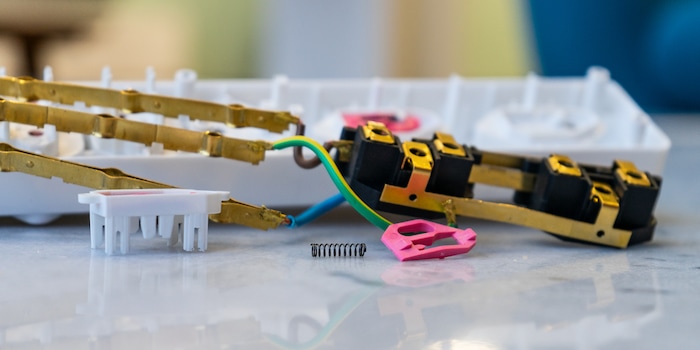
Power strips are supposed to make our lives, which are full of electronic devices, easier. However, child safety locks can throw a spanner in the works. As one user of our current Community campaign has also discovered. I took a closer look at the product's child safety lock.
Between five-star ratings à la "S'beschte power strip wo je hets gits" and one-star ratings such as "Power strip not only child-safe, but also adult-safe" - user opinions on the Brennenstuhl Swiss-Line Power Strip vary.
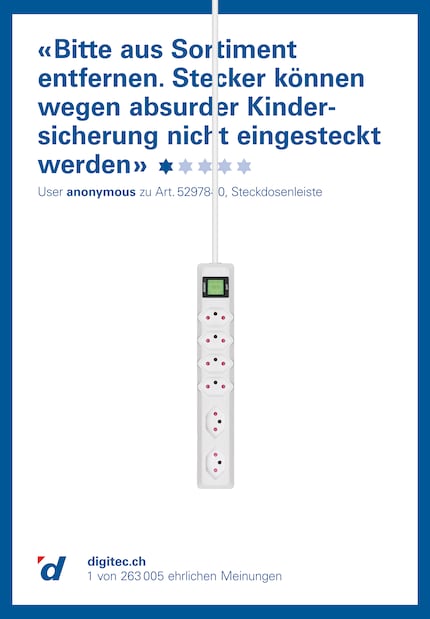
As the father of a 16-month-old son, I actually think child safety locks are a great thing. They protect my little one from a stupid accident. But I know the problem too. Child safety locks in power strips are usually so hard that it is almost impossible to connect plugs.
This was also the case with the Brennenstuhl product. I grabbed it and intensively pulled out the plug and connected it. My conclusion after around 100 attempts - tennis elbow included: With a little trial and error, the plug always goes in and out again. I need both hands to pull it out because I have to hold it out. When inserting, I have found that it helps to insert the connectors simultaneously and straight. That way, I can exert enough pressure to push the child safety lock to the side.
Which brings us to how the child safety lock works. You can't see much of the mechanism from the outside. Only the small ramps that ensure that the child safety lock slides to the side are visible. I unscrew the bar to see exactly how the lock works and whether I can remove it.

When I try to open the part, I realise that Brennenstuhl uses Micro-Stix screws. However, I don't have to run to a specialist retailer to buy the appropriate screwdrivers. I can open it with the appropriate slotted screwdriver. The six screws are quickly removed.
After opening, I only have to lift the conductive parts. The child safety mechanism on two of the connections is already open in front of me. This simple piece of pink plastic drives some users crazy.
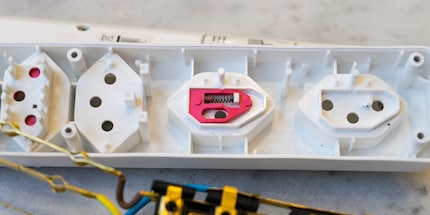
When I see this thing in front of me, I can understand why. I have a phobia of objects with an odd number of corners. Don't ask me why, but it's like this - now you know my darkest secret. So there you are, my heptagonal nightmare. Even your sweet pink colour doesn't fool me, you're plotting evil. I'm sure you want to take over the world. It sends shivers down my spine.
I swallow my fear and take a closer look at the item. I feel a little emasculated: the fact that the pink thing makes me so anxious scratches my ego. If only my colleague Livia Gamper were here, she loves pink and would surely be happy to fathom the mechanism for me.
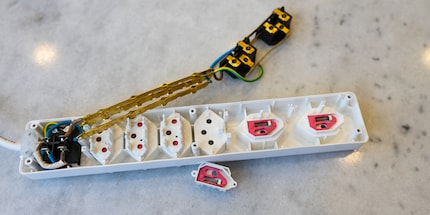
No matter, there's no turning back now - and it's actually already clear from a distance how the mechanism works. Fortunately, I don't even have to touch the thing. The mechanism is located in a cavity with some play towards the bottom. The small ramps protrude through the plug-in holes. When you press the connectors onto the mechanism, it moves downwards. Thanks to the ramps, it slides to the side at the same time, enabling the connection. As soon as you pull the connector again, a spring ensures that the mechanism springs back into its original position.
If you want to remove the child safety lock, all you have to do is remove the pink parts together with the spring. Then you have a socket strip without a child safety lock that will make your life a living hell. Handy if your children are old enough and you can do without the fuse.
Another small note: You open the product at your own risk. If you do something wrong, it can have serious consequences. But if you don't have two left hands, removing the childproof lock shouldn't be a big deal.
One user writes that his child safety locks don't cause any problems and believes that others have faulty locks. This gives me an idea that makes me whoop. I test my nightmare mould for its resistance. That way I can really hit it on the roof. Armed with pliers and a hammer, I face my worst dreams.
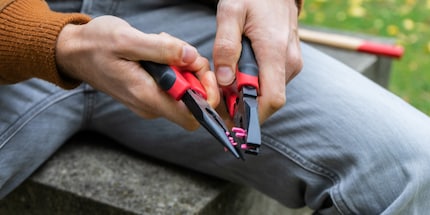

First I do the bend test. I gleefully apply the forceps to both sides of the heptagonal devil thing. After less than a second, the spook is over. I don't have to exert myself at all. I'm already a little disappointed. I would have liked a little more resistance - including pain-filled screams. But never mind, now it's time for the hammering.
It is unlikely that the child safety lock of horror in the socket strip will break by bending. It is more likely to be broken by blunt force. Armed with a hammer, I feel a bit like Oh Dae-su from "Oldboy". My story with the heptagon from hell is also a kind of revenge story. After all, I want to get my manhood back. Die, you pink thing! After hitting it a few times, I also sent the second child lock to the eternal hunting grounds. Kevin 2 - Heptagon 0.

So the child safety locks can't take much. It may well be that one or two users had a faulty child safety lock in their socket strip. But all six? That seems unrealistic to me.
Yes, the child safety lock can make your life a living hell. But if you practise a bit, you'll definitely manage to connect your plugs. Personally, I find it almost more annoying that I need both hands to pull the plugs out again.
If you don't have children of a critical age at home, it's better to buy a power strip without a child safety lock. If you are still reliant on the fuse, you can remove it when your children are old enough to handle the power strip. The child safety lock is a simple - albeit scary, heptagonal - mechanism and can be removed from the power strip in no time at all. And then you can happily let out the anger you've built up over the years on the fuse.

Brennenstuhl CleverLine
6 x, Type 13, 2 m
From big data to big brother, Cyborgs to Sci-Fi. All aspects of technology and society fascinate me.
Interesting facts about products, behind-the-scenes looks at manufacturers and deep-dives on interesting people.
Show all